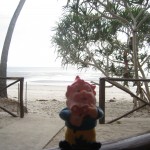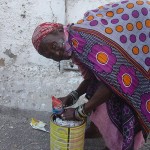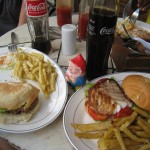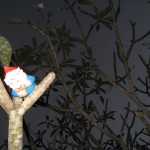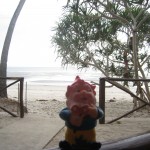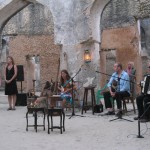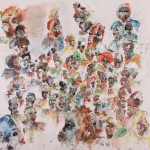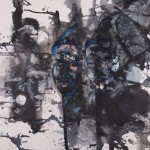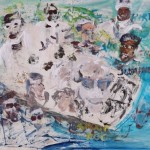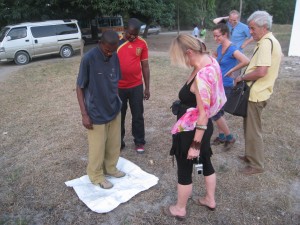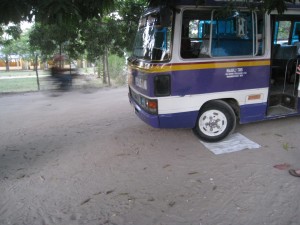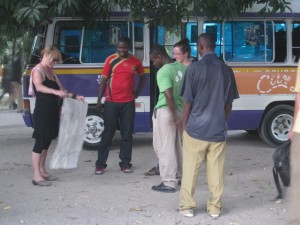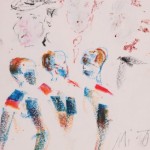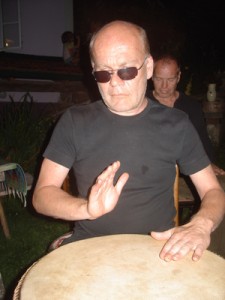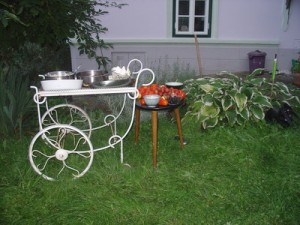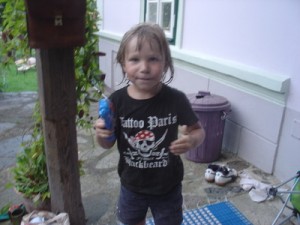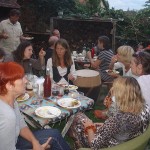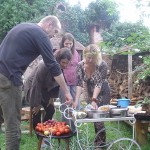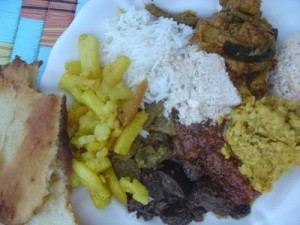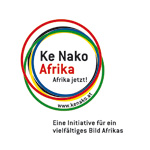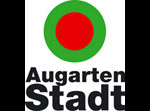Augartenzwerge in Ostafrika
- August 29th, 2010
- Write comment
Am Abend vor der Abfahrt wurden die Windhund vom Aktionsradius Augarten in einer festlichen Zeremonie in der Bunkerei verabschiedet. Übergeben wurde auch in Koffer mit Souvenirs aus der Augartenstadt, deren Bürgermeister Otto Lechner ist. Die darin enthaltenen Gartenzwerge – für jeden Reiseteilnehmer in indiviudalisiertem Dessin – nahmen wir mit auf die Reise. Manche kehrten mit heim, andere schlagen sich nun auf eigene Faust in Ostafrika durch. Mehr darüber gibt es bei der Präsentation am 28. September im Aktionsradius zu hören und sehen. In der Zwischenzeit reichen wir hiermit die Ansprache von Alois Kinast nach:
“Lieber Herr Bürgermeister, liebe Bourgemaîtresse, liebe Windhund!
Wie Ihr wisst, ist es ja keine Urlaubsreise, zu der Ihr nun aufbrecht…
Unsere Stadträtedelegation hat einen amtlichen augartenstädtischen Auftrag:
Nämlich durch einen Austausch der europäischen und afrikanischen Geister
e i n Kapitel der Überheblichkeit des Nordens abzuschließen.
Der Mythos vom Zivilisationsfortschritt der monotheistischen Religionen
(Islam, Judentum, Christentum) gegenüber dem “Animismus“ der afrikanischen
Tradition ist eine Langzeitwirkung der kolonialistischen Herrschaftsverhältnisse.
Die hohe Augartenstadt-Delegation bringt Gartenzwerge nach Afrika. Die meisten Menschen bei uns kaufen ihre Gartenzwerge am säkularen Markt, in Gartencenters, Baumärkten oder in den Ein-Euro-Shops. Gartenzwerge werden in der Regel nicht zu spirituellen Zwecken, sondern als Gartendekoration gekauft. Diese Umstände vernebeln die wirkliche Bedeutung der Gartenzwerge. Es sind die Geister der Völker Nord- und Mitteleuropas. Ursprünglich waren sie die Geister der Toten, die sich in der Welt der Lebenden aufhielten.
Ihre afrikanische Entsprechung sind die Geister der Ahnen, also die verstorbenen Vorfahren, die den Lebenden meist wohlgesinnt sind. Die Wiener Schrebergartensiedlungen – man schätzt, dass sich hier insgesamt eine halbe Million Gartenzwerge aufhalten – erinnern an das afrikanische Erbe, erinnern, dass es auch bei uns eine Zeit gab, in der die Ahnen und die Verstorbenen den lebenden Menschen auch nach dem Tod nahe blieben und auch Gesprächspartner.
Die Wiege der Augartenstadt ist Afrika, weil die Augartenstadt ein Teil der Menschheit ist und die Wiege der Menschheit in Afrika liegt. Politischer Populismus betont das, was die Menschen trennt. Die Herausforderung der Augartenstadt ist die Betonung des Verbindenden. Die Befreiung der Gartenzwerge aus ihrem «deutschen Michel»-Image, ihre Entfolklorisierung und Entkitschung legt die afrikanischen Wurzeln des Gartenzwergkultes frei.
Genauso wie es in Afrika auch böse Ahnengeister gibt, vor denen sich die Menschen fürchten und die also auch als Disziplinierungsmittel missbraucht werden, ist auch die Gartenzwergkultur ambivalent. Die Vorherrschaft des männlichen Geschlechts ist fest in der Gartenzwergwelt verankert. Obwohl sie so viele sind, benehmen sie sich wie eine unterdrückte Rasse, die sich nicht dagegen zu wehren versucht.
Die Begegnung der europäischen Gartenzwerge mit den Symbolen der afrikanischen Ahnengeister ist eine Premiere. Dem Bürgermeister Otto Lechner und seiner Augartenstadtdelegation ist es ein Anliegen, dass das Gute in den Gartenzwergen gestärkt wird durch das Gute in den afrikanischen Geistern. Und dass schließlich und endlich in den Wiener Schrebergärten ein Palaver entsteht zwischen Lebendigen und Toten. Dass sich schließlich und endlich niemand mehr vor dem Tod fürchten muss.
Lieber Herr Bürgermeister, liebe Bourgemaîtresse,
liebe Windhundbegleiter. Euch allen wünschen wir
eine schöne Reise und viel Erfolg bei Eurem Auftrag!
Wir freuen uns auf Euren Expeditionsbericht am
Dienstag, 28. September in unserer Amtsstube
am Gaußplatz 11… WINDHUND AHOI!”

